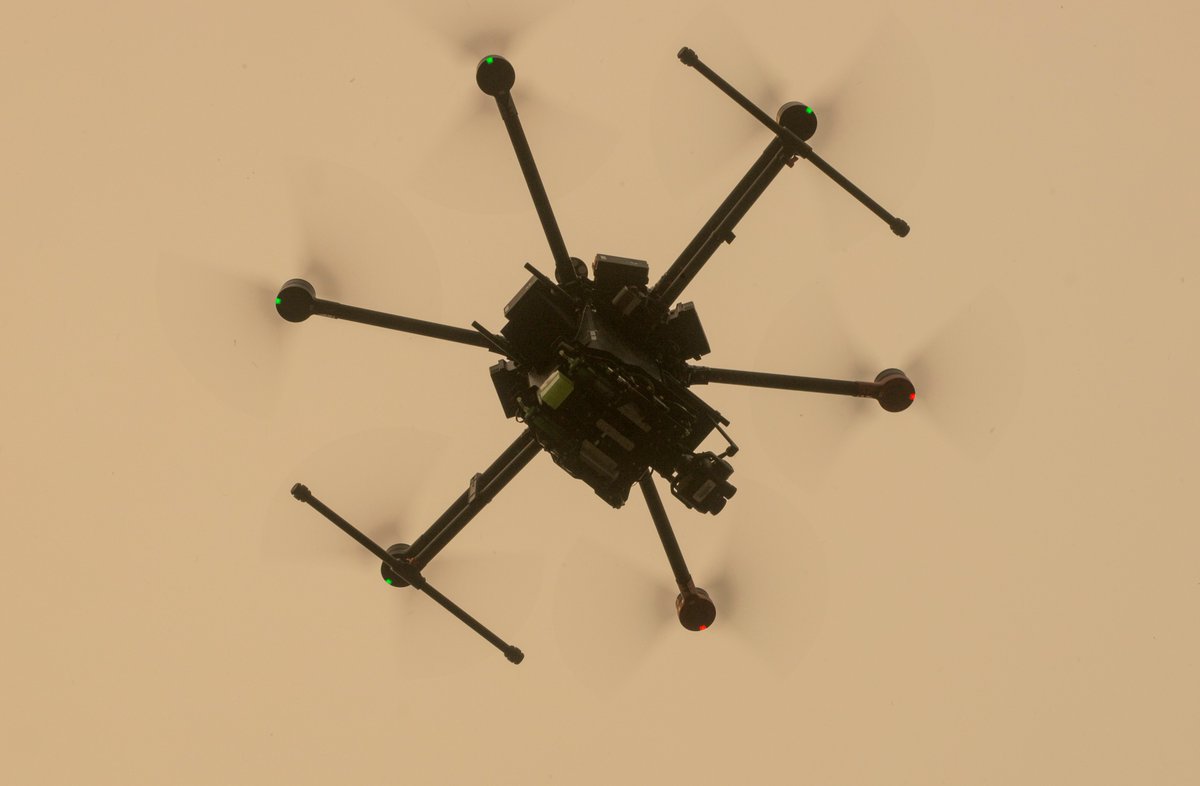No Drones Near Wildfires or in Wilderness
 Drones, or unmanned aircraft systems (UAS) as the Federal Aviation Administration calls them, are becoming more and more popular. These little aircraft are fun to fly and allow hobbyists the ability to see incredible sites. They also can pose a flight hazard, so hobbyists need to know and follow FAA rules when operating these little flying machines.
Drones, or unmanned aircraft systems (UAS) as the Federal Aviation Administration calls them, are becoming more and more popular. These little aircraft are fun to fly and allow hobbyists the ability to see incredible sites. They also can pose a flight hazard, so hobbyists need to know and follow FAA rules when operating these little flying machines.
Following are some tips to remember when flying UAS over national forests:
Know what kinds of UAS flights are permitted.
- The Federal Aviation Administration (FAA) has authority over all airspace. Ensure that you comply with all FAA regulations and guidance for flying UAS, available online at www.faa.gov/uas.
- UAS may not be flown for commercial or business purposes without FAA approval.
- UAS may be flown for recreation or hobby purposes in compliance with the Special Rule for Model Aircraft (Section 336 of Public Law 112-95).
- Model aircraft may not be flown for payment or commercial purposes.
- UAS may be flown by public entities (i.e. federal, state, and local government agencies and public universities) that obtain a Certificate of Waiver or Authorization from the FAA.
Know where you can – and can't – fly
- Fly UAS for recreational (not to accomplish any work, research, data gathering, or profit) or hobby purposes no higher than 400 feet above the surface, in compliance with FAA guidance.
- UAS are considered “mechanized” equipment and aircraft -- and consequently cannot fly over, take off from, or land in, congressionally designated Wilderness areas.
- UAS are not permitted to fly in areas that have “Temporary Flight Restrictions” in place, such as wildfires.
- If you wish to use UAS for other purposes, visit our Special Uses and Permits page.
Fly safely
- Take lessons and learn to fly safely.
- Do not fly near manned aircraft.
- Do not fly beyond line of sight of the operator.
- Do not fly over or near populated and noise-sensitive areas, such as campgrounds, trail heads and visitor centers.
- When flying within five miles of an airport or backcountry runway, contact the airport or control tower.
- Do not fly over or near wildfires without prior permission from fire managers. Unauthorized UAS flights could cause serious injury or death to firefighters on the ground and could have midair collisions with aircraft engaged in wildfire suppression missions.
Respect the rights of others
- Do not fly over congressionally designated Wilderness Areas or Primitive Areas as many people seek these places for the opportunities for solitude and quiet that they provide.
- Obey all privacy laws.
Protect wildlife
- Do not fly over or near wildlife as this can create stress that may cause significant harm, and even death.
View additional information about responsible use of UAS on National Forests.
Visit the Know Before You Fly website at: www.knowbeforeyoufly.org

